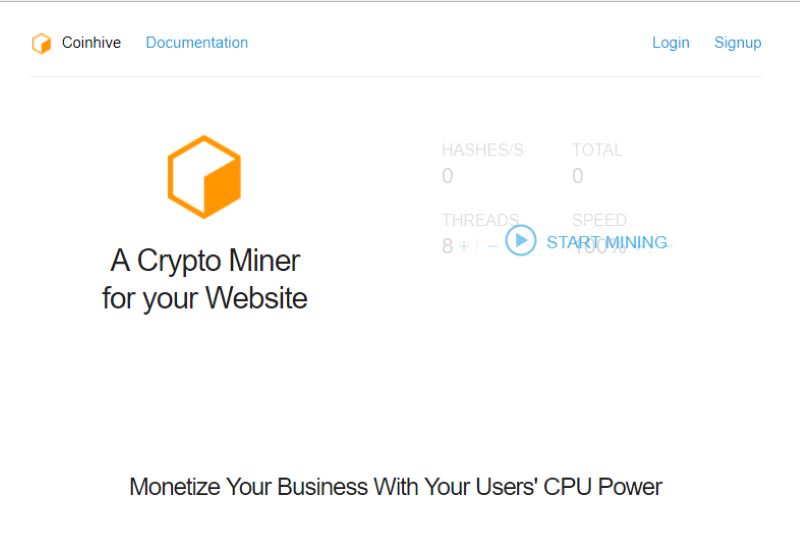Unveiling Coinhive Malware: What You Need to Know Now
Picture this: your computer slows down, the fan kicks into high gear, and you’re none the wiser about what’s cooking under the hood. It could be a sneaky digital critter known as Coinhive making itself at home. If you’re puzzled by what is Coinhive malware, you’re not alone. Think of it as a hidden miner, burrowing through your system’s resources to dig up digital coins without your okay. This blog strips down the complex attire from Coinhive, showing you its true colors. We’ll pry into how it works, why it’s a no-go without your nod, and what makes it tick or get the boot. Keep your digital pickaxe handy as we delve into the world of unauthorized cryptomining. Let’s knock out the tech jargon and get to the nitty-gritty of Coinhive—your device’s unwelcome moneymaker.
Understanding the Essentials of Coinhive Malware
Decoding the Functionality of Coinhive Cryptomining
Coinhive cryptojacking is a sneaky way to mine cryptocurrency. Hackers use your computer to make money for themselves. It runs a program that solves complex puzzles. The puzzles are part of how digital coin transactions are checked. When the puzzles are solved, the hacker earns cryptocurrency. The tool they use is called a Coinhive JavaScript miner. It’s a piece of code. This code works in your web browser. It is hidden in websites without you knowing. When your browser runs the code, it starts using your computer’s power to solve those puzzles.
This process is called cryptomining malware. It’s like a parasite. It uses your system’s energy and power to work for someone else. This can slow your computer down. It can even hurt its overall health. Keeping an eye out for slow performance can be a clue. It could mean you are a victim of a cryptojacking attack.
Other signs include your computer heating up and your battery dying fast. If your computer starts behaving weirdly, it could be that a cryptomining infection is at work. It’s smart to be cautious. You can look for sudden changes. If your computer runs slow or if you see strange things in your browser, check for Coinhive.
Legal and Ethical Implications of Unauthorized Coinhive Use
Putting Coinhive on a website without saying so is wrong. It’s like breaking into a house and using electricity without asking. It takes something valuable without permission – that’s the power of your computer. Site owners and Coinhive need to think about this. It’s not only about the law. It’s about doing what’s right. Using Coinhive on legitimate websites needs honesty. People should know that their computer’s power is being used.
When someone uses Coinhive without telling visitors, it can lead to trouble. Users might not trust the website anymore. This is because it used their computer without asking. This is a security risk. Web miners can make a website look dangerous. To keep users safe, Coinhive should only be used when people say it’s okay.
Kids, imagine if a stranger came into your house and started using your toys without asking. That’s not fair, right? You would want them to ask first. That’s how users feel about Coinhive. They want to be asked before their computer is used for mining. Staying open and clear with users is very important. It’s how trust is built. And it’s how everyone can stay safe and happy online.
Identifying and Mitigating Coinhive Infections
Recognizing Cryptojacking Attack Indicators
Let’s first talk about what signs to look for. Your computer works hard when Coinhive malware gets in. It mines a cryptocurrency named Monero without asking you. Think of it like a thief taking your car for a ride at night. When you wake up, your gas tank is empty!
One main hint is your computer slowing down. If websites take longer to load or if videos get choppy, watch out. That could mean a cryptojacker is at work. Your fan might start to work hard too. If it sounds like it’s trying to take off, that’s a bad sign. It’s working overtime to cool down the machine.
Watching your resources is also key. Coinhive malware uses a lot of your computer’s brainpower, or CPU. You can check this with a task manager program. If you see high CPU use and you’re not running big programs, that’s a clue. It means something fishy is going on behind the scenes.
Another red flag is battery drain. If you’re not plugged in, your laptop battery may run out fast. This happens because the mining scripts work hard and use a lot of power.
Key Steps in Coinhive Malware Removal
Now, let’s learn how to kick this cyber pest out. First, it’s smart to have reliable antivirus software. Good antivirus software can find and remove Coinhive scripts. Remember to update it often! This way, it knows the latest threats to look for.
Another big step is to use ad-blockers. They stop Coinhive scripts from loading in your browser. But, make sure you choose one that specifically says it blocks miners. Just any ad-blocker might not catch them.
Don’t download stuff from places you don’t trust. This is like not taking candy from strangers. Bad downloads can hide malware. You think you’re getting a sweet deal, but it’s really a trick.
Keep your programs up to date too. When you get those annoying pop-ups saying there’s an update, don’t hit snooze. Outdated software can have holes that let malware sneak in. Modern updates patch these holes up.
Lastly, let’s talk about browser extensions. Some extensions can spot miners like Coinhive and stop them. But just like ad-blockers, not all do this. Check for ones that say they’re on the lookout for crypto miners.
Coinhive malware is sneaky, but we can be smarter. By watching for these signs and taking action, we keep our computers safe and running well. Keep your guard up and let’s make sure our digital world stays a friendly place for everyone!
Protecting Your Systems Against Cryptomining Threats
How to Detect and Block Browser-Based Mining Scripts
Browser miners like Coinhive are sneaky. They use your computer to mine crypto, like Monero, without you knowing. Here’s the thing: they bog down your computer, and that’s not good. So how do you know if there’s a miner hiding in your browser? First, check if your computer’s slower than normal or if your fan’s going crazy for no reason. These could be signs that something’s off.
Now, onto the tricky part—spotting the Coinhive JavaScript miner. This miner is a bit of code that gets into websites and uses your computer’s power. You can spot it by watching your CPU use. If it spikes when you visit a website, there may be a miner at work. To block these scripts, you can use tools like No Coin or MinerBlock. These work like ad-blockers but for mining scripts. They help keep your computer safe from sneaky miners.
Implementing Cybersecurity Measures to Thwart Coinhive Activity
Stopping Coinhive starts with good cybersecurity habits. Keep your software up to date. This helps block threats that use old weaknesses in programs. Also, install trusted antivirus software. It can spot and remove Coinhive malware. Using a good ad-blocker can stop hidden cryptojacking scripts, too.
But what if you’re a site owner and not just a user? It’s on you to protect your visitors. Make sure your website’s clean of Coinhive scripts. If not, people might not trust your site. Regular scans for unauthorized scripts are a must. Also, be clear with your users. If you want to use their CPU for mining, ask them first. It’s only fair and keeps you on the right side of the law.
Remember, cybersecurity is not a one-time fix—it needs regular checks and updates. Stay aware of new threats and keep learning. By following these steps, you can fight off Coinhive and other cryptojacking risks. Stay safe out there!
Exploring Alternatives and Building User Trust
Viable Coinhive Alternatives with Explicit User Consent
Websites need money to run. Ads were once king, but now, web mining is a new player. It asks for power from your computer to mine digital coins like Monero. Coinhive was one big name, using JavaScript to mine coins through your browser. Yet, it did this often without users knowing. Not cool, right?
The key here is to get user OK. There are alternatives to Coinhive that are upfront with you. They ask if you’re willing to share some of your computer’s juice for their gain. With your yes, mining begins. It’s that simple. These alternatives are changing the game, making sure you know what’s what.
One clear choice asks you right on the site before mining kicks off. Another sends you the miner’s details through clear messages. Tools like these put you back in charge. You get to help out a site you like, all the while knowing exactly what you’re giving.
Strengthening Website Security against Hidden Mining Activities
Now, onto keeping things safe from sneaky miners. These miners hide in websites, taking your computer’s power without a peep. But you can stop them! Think of it like a game. Your goal is to catch these hidden miners and boot them out.
You can find tell-tale signs of cryptojacking. Your computer might slow down, or your battery could dive fast. Yeah, these are clues. Spot them and it’s time to act. How? First off, keep your anti-virus program sharp. It’ll hunt down sneaky scripts like Coinhive’s and show them the door.
Site owners should stay sharp too. Check your website for anything that shouldn’t be there. If you find a miner hiding away, it’s time to clean house. There are steps you can take, like web security scans or keeping close tabs on your site’s code.
But here’s what boils it all down: trust. You need to know the sites you visit have your back. They should block any mining that tries to slide by without a hello. With good tools and the right know-how, you can enjoy the web knowing your power stays yours.
We’ve just explored the ins and outs of Coinhive malware, including what it does and why it’s a problem. We know it can sneak onto systems and mine cryptocurrency without consent, which is both a legal and ethical no-no. We’ve also covered how to spot it and get rid of it, ensuring your devices stay clean.
But that’s not the end of the story. Beyond removing this sneaky software, protect your systems with strong security steps to block browser-based mining scripts. It’s all about keeping one step ahead of any cyber threats that could hit your systems.
And for those who need to mine online, always choose options that get clear user permission first. Show your visitors you value their trust by guarding your website against hidden mining tricks. Keep your site safe, and visitors will keep coming back. Remember, a secure website wins every time. Let’s stay vigilant and keep our online spaces safe and fair for everyone!
Q&A :
What is the Coinhive malware and how does it work?
Coinhive malware is a type of malicious software that hijacks a computer’s processing power to mine cryptocurrency, specifically Monero. It operates by embedding JavaScript code into websites or online advertisements, which then runs in the web browsers of unsuspecting visitors. The script uses the device’s resources to perform complex cryptographic tasks necessary for mining, often without the user’s consent or knowledge, leading to decreased performance and increased energy consumption on the affected devices.
How can I tell if my computer has been infected with Coinhive malware?
If your computer has been infected with Coinhive malware, you might notice a significant slowdown in performance, especially when browsing the internet. Other symptoms include overactive fans, increased CPU usage when visiting particular websites, and a higher than normal electricity bill, as the malware increases the energy consumption of the infected device. To confirm the presence of Coinhive or similar crypto-mining malware, you can use task manager (on Windows) or system monitor (on macOS) to check for unusual resource usage by your browser or any unknown processes running.
What are the risks associated with Coinhive malware?
The primary risks associated with Coinhive malware are related to the unauthorized use of your computer’s resources, which can lead to system slowdown, increased wear and tear on components, and potentially higher electricity costs. Additionally, because the malware runs in the background, it may also compromise your system’s security and stability, making it more vulnerable to further infections or data breaches.
Can Coinhive malware damage my computer?
Yes, Coinhive malware can potentially damage your computer. Continuous high CPU usage can cause overheating, which may result in hardware damage and a shortened lifespan of your computer’s components. The malware can also interfere with system performance, leading to frequent crashes and instability.
How can I prevent Coinhive malware infections?
To prevent Coinhive malware infections, it is essential to have up-to-date antivirus and anti-malware software that can detect and block such threats. Additionally, use ad blockers or script blocking extensions in your web browser to prevent malicious scripts from running. Keep your browser and all plugins up-to-date to protect against known vulnerabilities, and be cautious when visiting new or unknown websites. Regularly monitor your system’s performance for any signs of unauthorized resource usage.




